When most people think of camping they instantly think of camping in a tent. But, there are three alternative ways to camp – bivouac, hammock, and tarp camping!
So, let’s dive into the advantages and disadvantages of each camping method and see if the alternatives are worth the effort.
Article Contents:
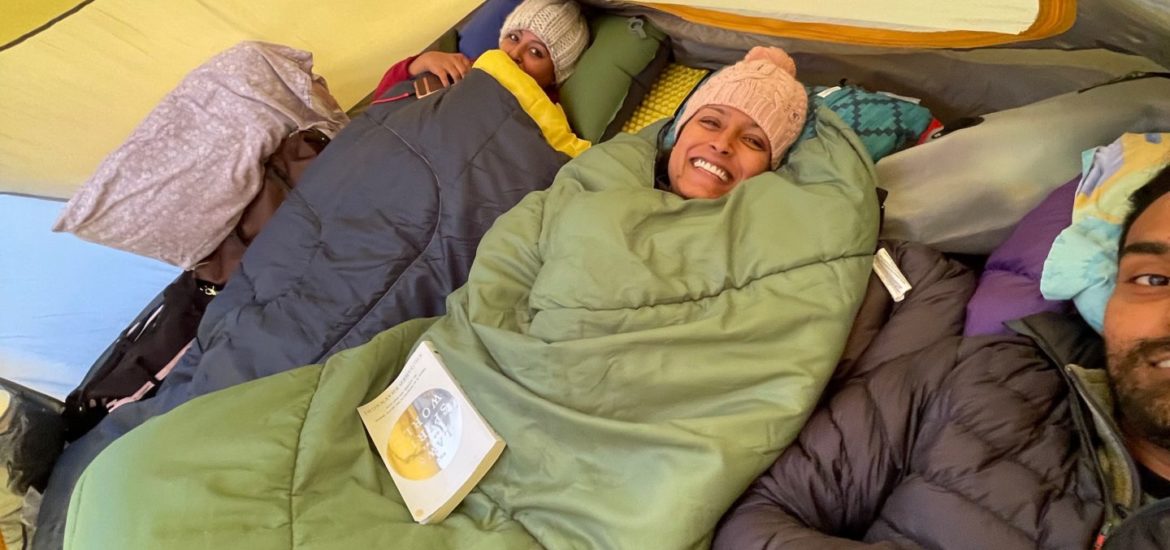
Tent Camping
Whether you are car camping or deep in the backcountry, using a tent to shelter from the elements is the standard way to camp.
And if you’re out by yourself, or family camping, a high-quality tent helps keep you protected from the elements.
Benefits of Camping Without a Tent
However, there are a few key benefits of camping without a tent which may or may not apply to your specific outdoor adventure.
- Tents are often too bulky and heavy which makes them less desirable for ultra-light weight adventures such as bike-packing or alpine climbing.
Pro-tip: Check out my database for the average weight of different camping tent capacities.
- Tents also take time to set up and take down. So, if you’re moving from site to site constantly, or need to rapidly erect and disassemble your shelter, you would need to include extra time for it.
Pro-tip: Check out my universal tent setup guide for tips!
- A high-quality tent comes at a premium price starting at $300 all the way up to $800 for a 4 person, 3 season tent.
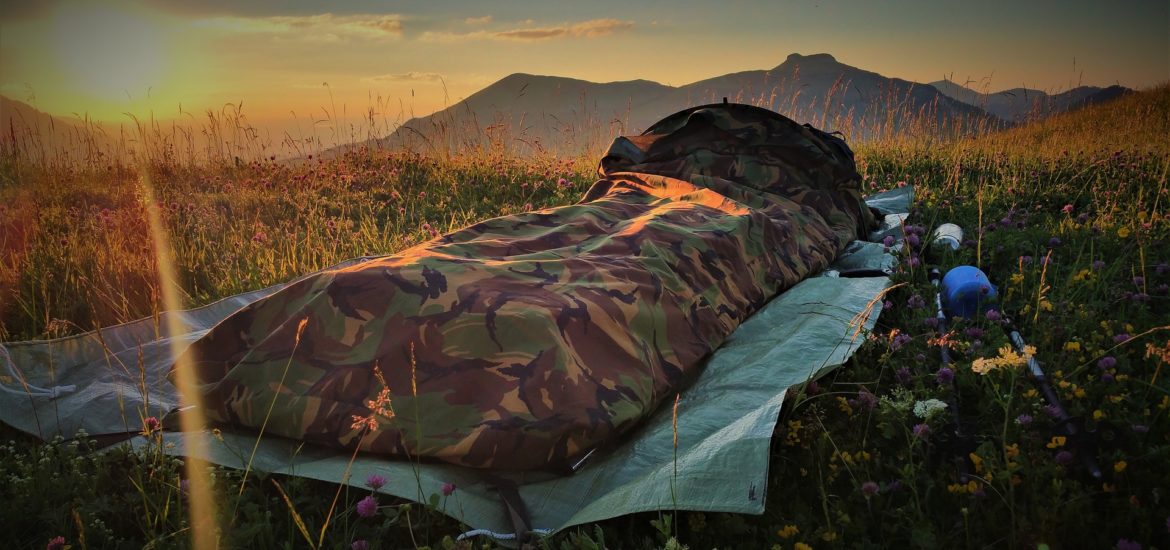
Bivouac Camping
Bivouacking, the verb of bivouac, is commonly known as the act of sleeping outside without a tent.
In some cases, bivouacking just means hunkering down in your clothes and weathering the night – “to shelter in place”.
In other circumstances it means packing just a sleeping bag, mat, and “bivy bag” and trying to keep warm overnight while attempting a summit push in the Himalayas.
But, bivouacking isn’t only relegated to mountaineering and extreme conditions. Some backpackers and hikers attempting to ultralight camp prefer to bivouac in-lieu of packing a tent – less gear, less weight, less energy expenditure.
What is a Bivy Sack
A bivy sack is an impermeable layer or liner that is meant to provide protection from the outside elements.
A bivy bag fully encloses around your body to keep in warmth and keep out wind and water. A bivy sack typically weighs between 0.6 to 0.8 kg (21 to 28 oz).
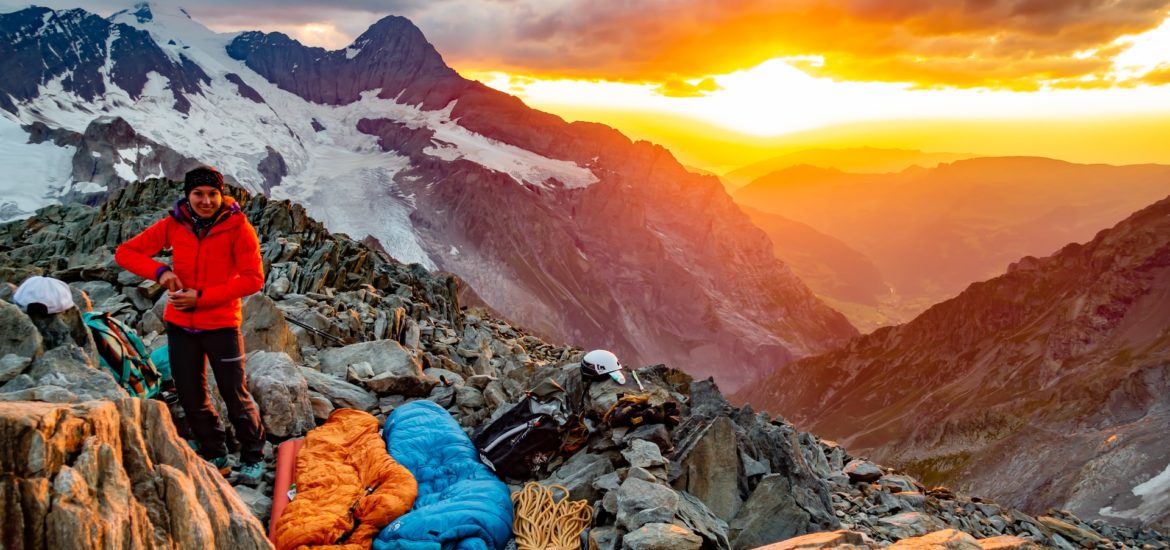
When and Where to Use a Bivy Sack
Unlike a tent, a bivy bag takes up no more space on the ground than your body. Essentially, wherever your body can laydown and rest, a bivy sack can also work. Bivy sacks are typically used when light-weight travel and sheltering is required.
Most bivy sacks are super quick to deploy and simple to set up, saving you precious time, energy and resources to use for other activities.
- Light-weight bike-packers, adventure racers, and trail-runners might use a bivy sack instead of carry a tent.
- A bivy sack can be used for alpine climbing, for light-weight ascents.
- In the winter, a bivy bag can improve the cold weather rating of your sleeping bag by up to 5oC, which can help you sleep more comfortably in frigid conditions.
How Much Does a Bivy Sack Cost
High-quality bivy bags are made from exceptional materials that are light-weight, durable, breathable and waterproof. Some bivy sacks include a single pole for head clearance or a bug net for added comfort, airflow, and flexibility.
It might come as a surprise, but bivy sacks aren’t cheap. A good bivy sack costs between $200 to $250 and up.
The Interstellar Ascentshell Bivy by Outdoor Research is an excellent choice for most users. The key specifications are as follows:
- 8 feet long x 2.2 feet wide (at the shoulder) and 1.4 feet wide (at the head)
- Weighs 21 ounces
- Includes single pole for extra head height
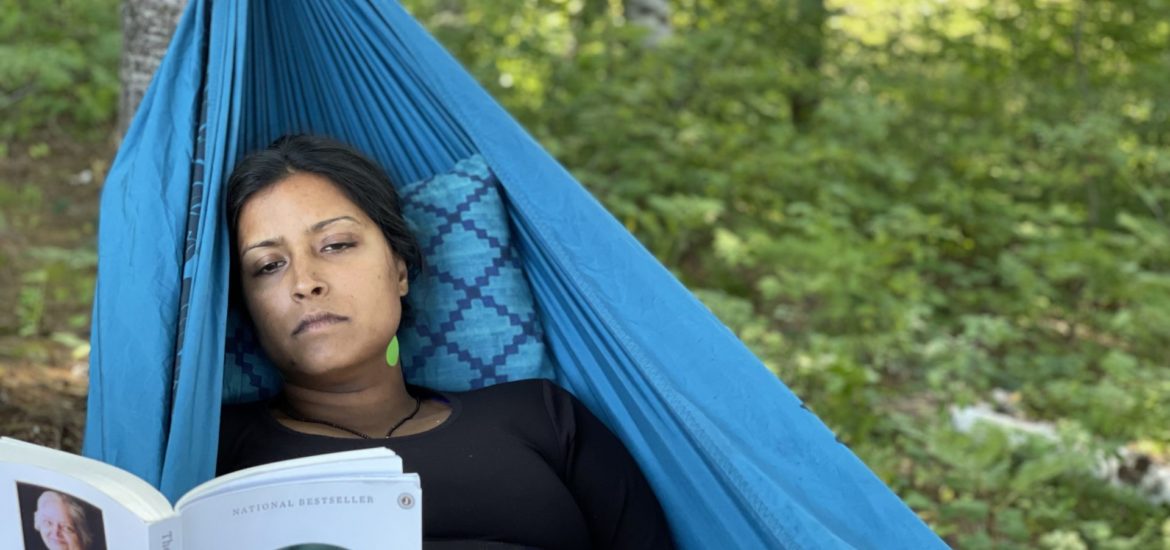
Hammock Camping
A lot of campers as well as outdoor enthusiasts opt to use lightweight outdoor hammocks for both relaxation and overnight sleeping.
Hammocks are extremely lightweight and compact which make them excellent sleeping and sheltering gear, if implemented correctly.
A standard single person hammock is around 275 cm (9 feet) long, with a capacity of 181 kg (400 lbs), and weighs 648 g (1 lb 7 oz).
When and Where to Use a Hammock
A hammock is typically strung up between two trees, and keeps you suspended over the the ground. In rocky, uneven ground, a hammock can be a godsend for your back.
- A hammock doesn’t require the use of a mattress pad to cushion you from the ground.
Because a hammock is mostly supported by larger trees, its usage is typically relegated to sub-alpine altitudes and sub Arctic / Antarctic climates where the tree line ends.
However, with a little ingenuity, a hammock can be suspended between two boulders, against a rock wall, or in a cave.
Hammock Precautions
If you’re camping in unknown territory, with limited trees or no known previous use of hammocks, it’s comes at a greater risk of not being able to use it effectively.
In buggy conditions, without an insect net, sleeping unprotected in a hammock will leave you susceptible to mosquitoes and flies. They can be relentless, so make sure to bring proper physical protection.
Similarly, sleeping in a hammock leaves you exposed to wind and rain. Without adequate protection from the elements, you might get wet, cold, and risk developing hypothermia.
Most hammocks also don’t include a tarp to shelter from rain or direct sunlight. So, setting up an a-frame style tarp overhead can greatly enhance your hammock experience.
- For car camping, a 12’ x 9’ polypropylene tarpis good to protect the hammock and anyone laying inside.
- For backcountry camping, a lightweight and waterproof nylon tarp is a better choice. This hammock tarp from Amazon is purpose built for hammocks, and it includes guy-lines and ground stakes!
How Much Does a Hammock Cost
Camping hammocks are actually quite affordable when compared to tents and bivy sacks which is partially why they are quite popular.
A good standard single person hammock costs between $30 to $70. Personally, I carry the Therm-a-rest Slacker hammock. It’s made from polyester which is extra soft yet comfortable and durable.
However, if you do get a hammock, make sure you also check to see if it comes with anchor straps / webbing. If it doesn’t, this set of hammock tree straps on Amazon is under $20.
Likewise, if you’re planning on using a hammock with plenty of mosquitoes and flies buzzing around, you should consider using an insect net.
This hammock compatible mosquito net on Amazon neatly wraps around your hammock providing a physical barrier from blood sucking bugs.
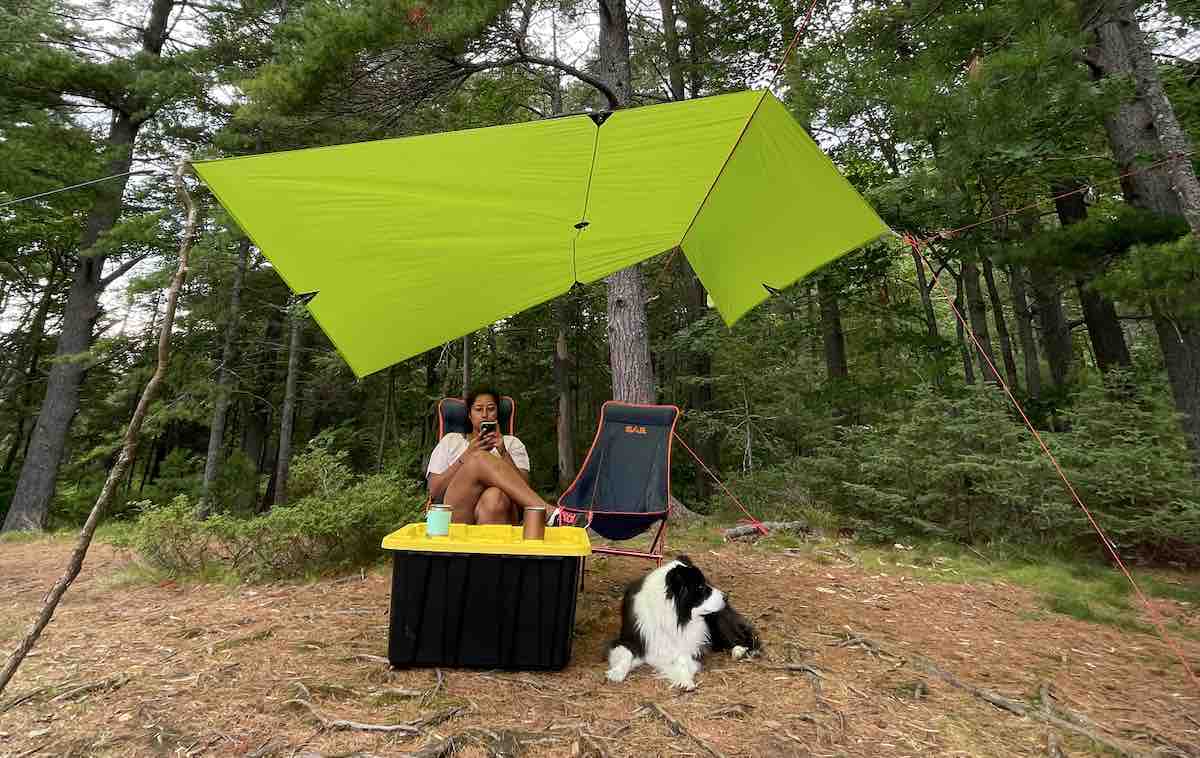
Tarp Camping
When most people think of tarp camping they tend to think of primitive and survivalist camping, or emergency shelters. But tarp camping is so much more!
Essentially, it’s about utilizing a thin impermeable layer, stung in a way to create a barrier between rain and wind to keep you warm and dry.
A shelter fashioned from a tarp is extremely lightweight and very versatile. In most camping conditions, a tarp can be used alone or in conjunction with timbers, hiking poles, and rope to create a make-shift tent.
Tarp Materials
Tarps are typically made from synthetic fibers, commonly nylon, polyester, and polyethylene, which are strong, moisture resistant, and lightweight.
- Nylon and its variants are typically high strength and lightweight.
- Polyester and its variants are generally more durable
- Polyethylene is inexpensive but heavy and not packable
- Canvas tarps are too bulky for camping use
To enhance the water repelling performance, manufacturers typically apply a waterproof coating to one side of tarps.
- Waterproof coatings are required for nylon and polyester woven fabric tarps, but are not required for polyethylene tarps which are intrinsically waterproof.
Pro-tip: For more information about tarp materials, sizes, and rope requirements, check out my article on What Are The Best Tarps for Camping.
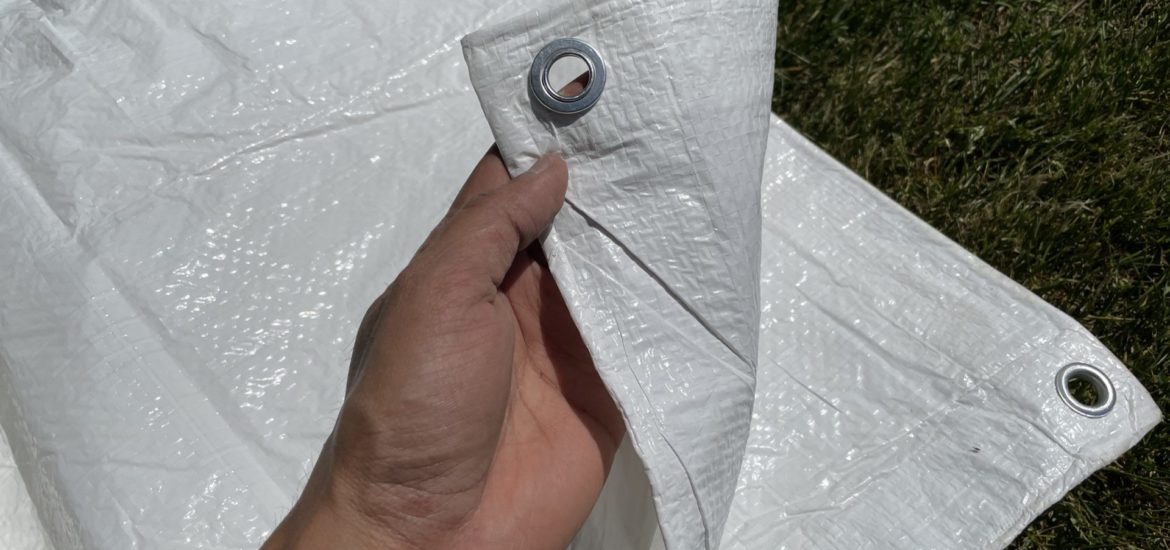
When and Where to Use a Tarp
Whether it’s showcased on reality shows such as Alone or Survivor, a tarp is a key piece of equipment to keep you protected from the elements.
Rain, direct sunlight, even wind can wreck havoc on your campsite. A well placed and properly utilized tarp will help keep mother nature at bay.
- If there is no risk of rain or snow, you can simply place a tarp on the ground and sleep on top of it. That alone can keep you and your gear protected from ground moisture overnight.
- If rain or snow is in the forecast, a suspended tarp will be able to deflect and shield you and your gear from rain or snow.
- A tarp also positioned partially vertically from low on the ground can help deflect strong winds from chilling your body, or keep your fire protected.
An ultralight tarp set up consists of pegging one end of the tarp into the ground, and then propping up the other end with poles. Downward tension on the poles with the use of staked out guy lines can keep them in place. You can then hunker down underneath, protected from the weather.
The downside of a tarp is that it doesn’t stop insects or small animals. So, you’re left exposed to critters.
How Much Does a Tarp Cost
There are loads of tarps on the market which can make it difficult and confusing to find the right one to suit your needs.
- A polyethylene tarp costs on average $2.00 per square meter, and ranges from a maximum of $3.75 to a minimum of $0.60 per square meter.
- A nylon or polyester tarp with waterproof coating costs on average $13.90 per square meter, and ranges from a maximum of $38.50 to a minimum of $3.90 per square meter.
Pro-tip: For more information, check out How Much Does a Tarp Cost and Weigh.
Personally, I own a MEC Silicone Scout Tarp for backcountry camping and several large polyethylene tarps for car camping. They’ve easily stood up to torrential downpours and fierce winds.
To keep the decision-making process simple, I highly recommend the follow tarps for car camping and backcountry camping:
Car Camping – Budget-Friendly Option
Typically, when you are car camping weight isn’t an issue but cost is. So, I’d recommend using a polyethylene tarp. They are manufactured inexpensively and are durable enough for car camping.
First check your local hardware or outdoor store for polyethylene tarps. If you need to find one online, this polyethylene tarp on Amazon is a perfect size and is relatively cheap!
Backcountry Camping – Premium Option
For backpackers and backcountry campers, the $70 REI Co-op Trailbreak Tarp (12’ x 12’) is a great option. For its size and performance characteristics it’s the best value.
Alternatively, the next best value option is the Aqua Quest Defender Tarp (15’ x 15’). This tarp is fantastic for larger groups. Its large size can create a massive sheltered area to keep people, equipment, and supplies out of the rain or protected from the sun.
This article contains affiliate links, which help support this blog at no cost to you!
